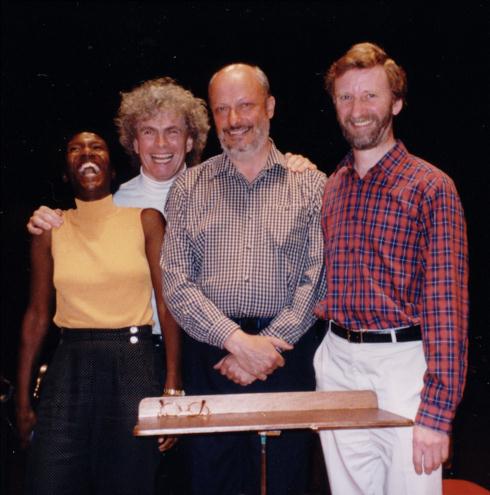Bassoon Fingerings
As used by the CBSO bassoon section (in 1992!)

In 1992 the CBSO Education Department arranged a Double Reed Day for children in Birmingham schools. The CBSO bassoon section, Margaret Cookhorn, Andrew Barnell and myself (left to right in the front of the picture), produced a booklet of bassoon fingerings for the participants. The Best bassoon fingerings are reproduced from that booklet.
The other face in the picture is, of course, Sir Simon Rattle who was our conductor when this event took place. The photograph was taken on his last day as our Principal Conductor.
The Best bassoon fingerings are those that we used in the CBSO bassoon section. If there is more than one fingering for a note it is because we didn’t all use the same one for that note. The diagrams probably show more keys than are on your instrument. Any extra keys shown are likely to be for trills or very high notes so don’t worry if you haven’t got them. If you haven’t got a high d key (left thumb, top of tenor joint) you can try using the c key (next one down).
Click on a stave on the right to go the fingerings.
There are also some alternative fingerings that we use in special circumstances like difficult slurs or particular combinations of notes.
There is a page of fingerings for trills and shakes. The diagrams are animated GIFs, so if you only see a static fingering you need to set your browser for animations or try a different browser.
For a complete list of all the fingerings I know (plus many that I have forgotten!) go to the page with all my fingerings. You can also access all my trill and shake fingerings. My computer can even suggest fingerings for a trill or shake of your choice that minimises your finger changes!
If you have any good fingerings that I haven’t got on my site then please send me a message with any comments or suggestions.
If you need more fingerings try the IDRS Bassoon-Family Fingering Companion.
Please note that in UK the word ‘crook’ is used when USA bassoonists would use ‘bocal’.
The ‘crook’ key is also known in the US as the ‘whisper’ key.
